Simple narrow Filters
I required a simple narrow bandwidth filter without large
stop-band attenuation to select a mixing product from an output of a
square law mixer , I wanted the selective circuit to be as simple and as
inexpensive as possible . As my filter requirements where not that stringent
with respect to ultimate stopband , 20 dB would be fine ,that would get my
wanted signal well above the crud where i could use it , but I did
require a very narrow bandwidth to select a wanted mixing product that
appeared at a slightly higher output level ~ 6 dB above the other products
. The internet is a great place to start to look for ideas . .
I investigated several filter techniques , the single phasing crystal filter
where by you use some anti-phase feedback via a "neutralising" capacitor
to keep the bandwidth symmetrical and one varies the load on the crystal
element to effectively change the bandwidth of the pass-band >
there is lots of information on the net if one searches under phasing crystal
filter with examples and circuitry to achieve this .
I found a good twin crystal derivative on a La 8 website ,
http://www.agder.net/la8ak/12345/n23.htm
it had great bandwidth performance and very good stop band attenuation but the
loss was a little excess BUT that could be due to my poor filter input and
output matching ??
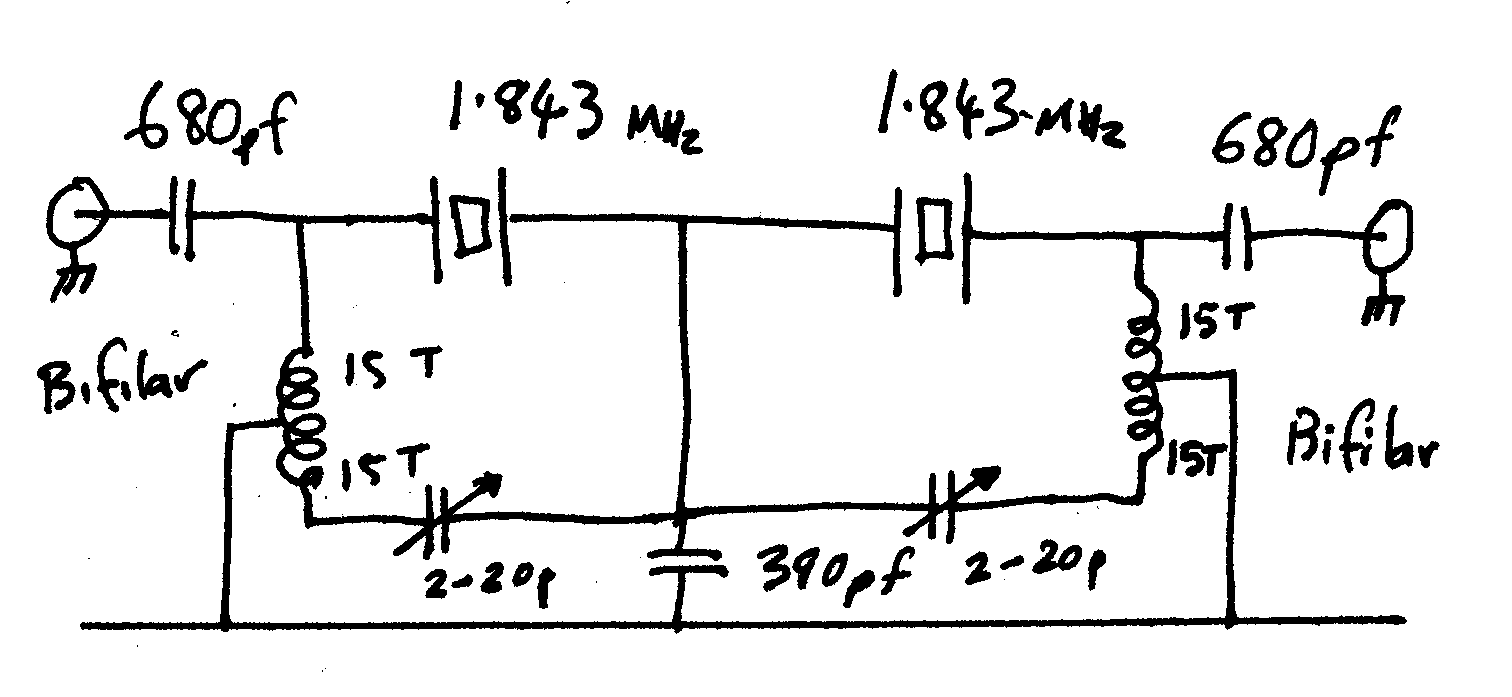
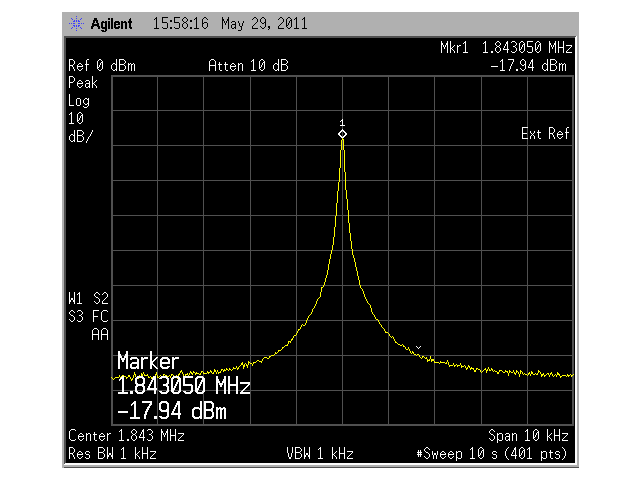
I was wanting to extract a relatively weak mixing product from a square law
mixing circuit as required in the technique for generating the Local oscillator
for a Double sideband suppressed carrier demodulator circuit . The
square-law mixing products are abundant at the output of the square law
circuit ,and one has to have a narrow filter to select the wanted product from
the plethora of mixing products .
With communications audio bandwidth from 300 Hz to 3000 Hz, one is
starting with an advantage , by the time you have passed the DSB through
the squaring circuit, the squaring action places the generated sideband
harmonics plus and minus 600 Hz ( not 300) either side of the wanted
synthesised carrier , This relaxes the requirements of the filter bandwidth . I
did a composite sweep build up of the output spectrum of the squaring mixer over
30 seconds and you can see the definite "notches" where the frequency tailored
audio tapers away
. 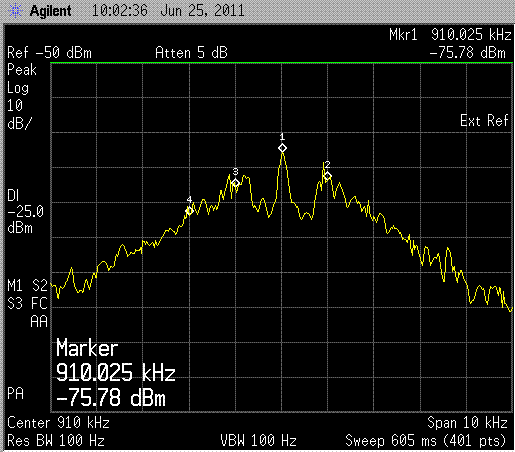
I did play around with ceramic filters /resonators at 1 Mhz but
gave up as their low Q makes the simple filter bandwidth far too wide .
Quartz crystals are your only real choice for a simple and inexpensive filter
with the desirable performance .http://www.agder.net/la8ak/12345/n19.htm
I chose frequencies that where in common use by the microprocessor world ,
these are inexpensive and span a wide range , The lower the frequency the better
the filter performance wrt bandwidth , I.843 MHz was my frequency of
choice .
I wanted to make the filter as simple as possible ,easily reproducible
without specialised test equipment . I did do some experimentation where
by in a simple class A rf amplifier . one replaces the emitter bypass capacitor
with a crystal at the wanted frequency and use the phenomenon of series
resonance produces very low impedance and effectively lifts
the gain of the amplifier at the crystal resonance . hence one sees a peak in
amplifier gain at resonance . There is a proviso to this , you really need
about 10 k emitter resistor for this technique to work well and provide a
reasonable stopband attenuation figure along with a narrow bandwidth . I
found that a lot of + 12v amplifier configurations gave good filter performance
20-30 db stopband ,narrow bandwidth 200-400 Hz but an overall negative gain , it
was only when the emitter resistor was reduced to the typical 470 ohms or less
did gain become positive but stopband attenuation and bandwidth suffered , so I
gave up on this technique .

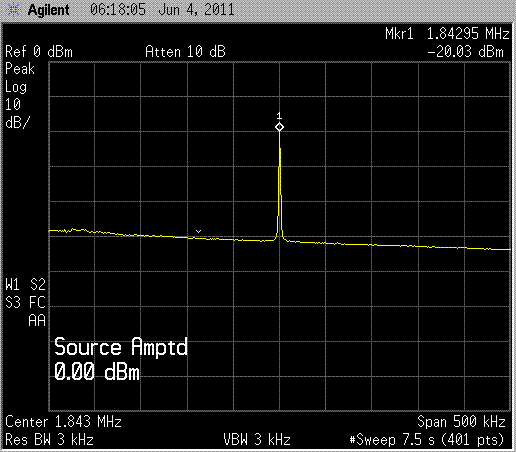
There is a neat little cascade 4 transistor amplifier I
found on
Harry Lythall - SM0VPO
website it had 3 transistor in totem pole configuration ie the current flow was
common to the first 3 active devices and each transistor had its emitter
bypassed to earth via 1nf capacitors , This circuit has a lot of gain in a small
package and I found that by using a crystal in place of an emitter
bypass cap an effective simple filter with gain could be made.
I experimented with the crystal in the first bypass cap position , The second
bypass cap position and twin crystals,
.
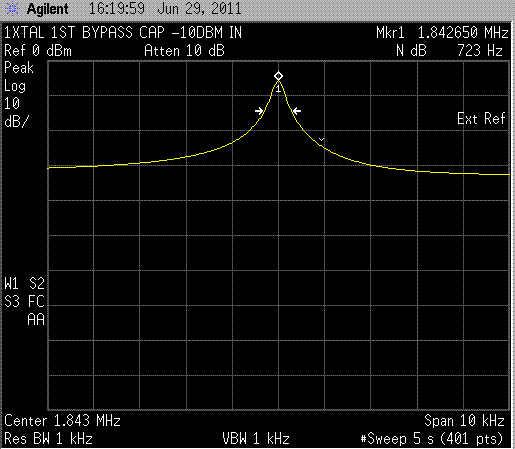
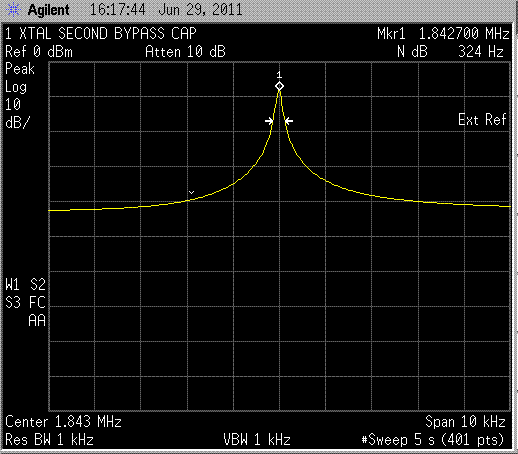
Note the difference in the filter response between bypass 1 and
bypass 2 ?? crystal
loading ??
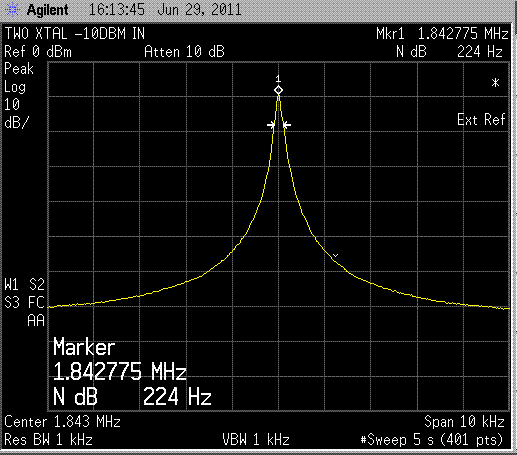
bypass 1 and 2 with closely matched crystals
There is a handy trick one can do using an NE592
video amp and Im sure it will work with other IC's which use a feed
back network to achieve fixed gain or control . The uA733
and NE 592 frequency response can be tailored by the feedback network
between the gain set pins ( see the NE592 Application notes for more
information on this)
I came across a filter circuit on the 'net using a quartz crystal as
being the feedback network and thus controlling the gain of the chip with
respect to frequency .http://www.qrp4u.de/docs/en/zf_ampl/index.htm
, this amplifier has good gain with frequency response and
will be my choice of active filter circuit to select the frequency component I
require from the mixer output
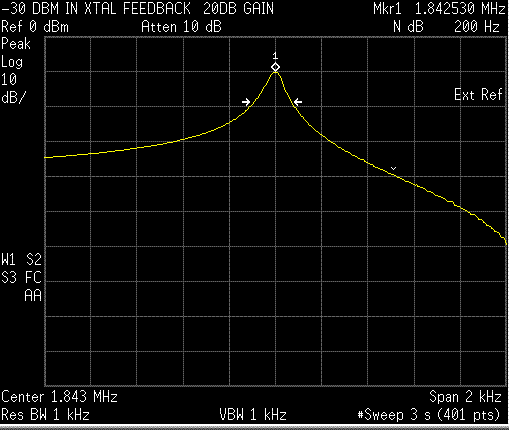
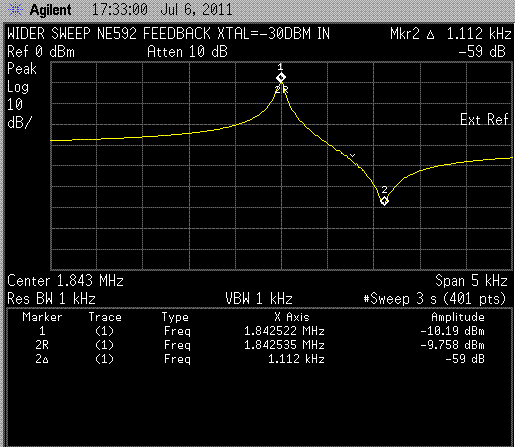
NE592 200 Hz
B.W at 10 dB level !!
typical swept crystal response
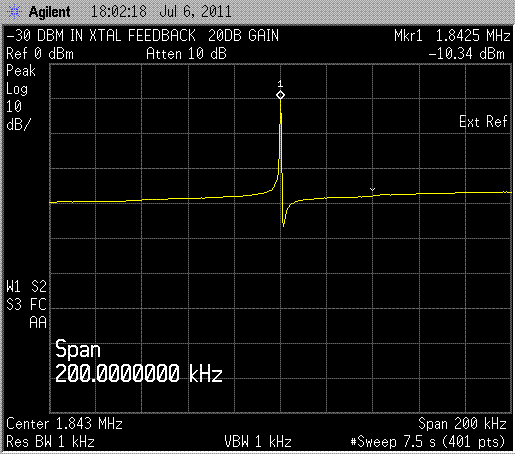
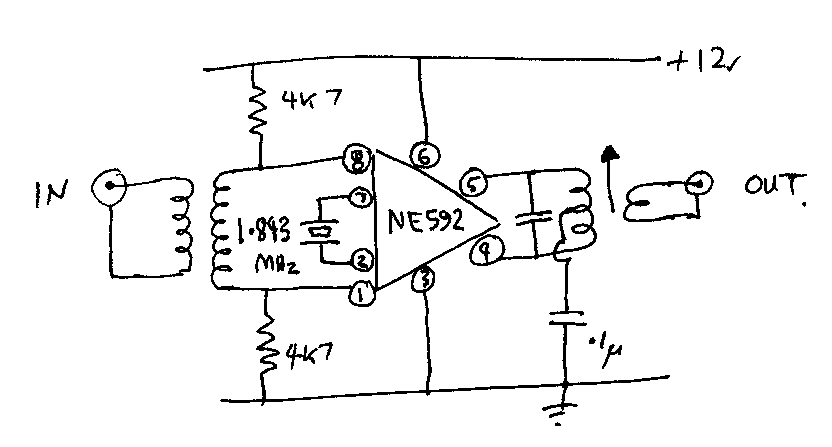
Suitable narrow response and with 20 db gain to boot
! perfect
cicuit i used .................. note centre tap of output
tank decoupled to earth
I will try the NE592 as a filter , my only
minor technical concern is that with this active filter, the high level
broadband signals get access to the potentially corruptible solid-state
electronics before the passive filtering of the crystal can shave down the
broadband crud the amplifier sees . this of course is a theoretical potential
problem that I feel in my application wont really be a problem .
back to home page

